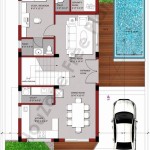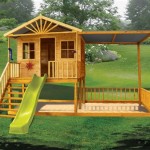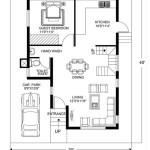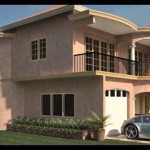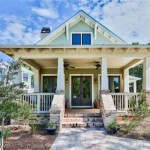Modular Home Plans: A Comprehensive Guide
Modular home plans offer a compelling alternative to traditional site-built construction, providing a potentially faster, more cost-effective, and often more sustainable pathway to homeownership. These homes are constructed in sections, or modules, in a controlled factory environment and then transported to the building site for assembly on a permanent foundation. The increasing popularity of modular construction stems from its ability to deliver high-quality homes with precise engineering and efficient project management. Understanding the nuances of modular home plans is crucial for anyone considering this construction method.
The core concept behind modular home plans is prefabrication. Instead of constructing a home piece-by-piece at the final location, the house is divided into manageable modules. Each module is built with all necessary components, including wiring, plumbing, insulation, and interior finishes. This process allows for parallel construction; while the foundation is being prepared on-site, the modules are simultaneously being built in the factory. This concurrent operation can substantially reduce the overall construction timeline.
Modular homes are often confused with manufactured homes (formerly known as mobile homes), but the two are distinctly different. Manufactured homes are built to the HUD (Housing and Urban Development) code, a federal standard. Modular homes, on the other hand, adhere to the same local and state building codes as site-built homes. This means modular homes must meet the same rigorous standards for safety, structural integrity, and energy efficiency as their traditionally built counterparts.
Advantages of Choosing Modular Home Plans
Selecting modular home plans presents several potential advantages over conventional construction methods. These benefits contribute to the growing appeal of modular homes among prospective homeowners.
One of the primary advantages is cost savings. Due to the efficient factory environment, modular construction often results in lower labor costs and reduced material waste. The controlled conditions minimize weather-related delays, further contributing to cost predictability. Bulk purchasing of materials by modular manufacturers also translates to cost savings that can be passed on to the buyer.
Another significant benefit is the speed of construction. With parallel construction processes, the overall project timeline can be significantly shorter than that of site-built homes. This expedited timeline allows homeowners to move into their new homes faster, reducing interim housing costs and minimizing disruption.
Quality control is also enhanced in modular construction. The factory environment allows for consistent and rigorous quality inspections at each stage of the building process. This leads to a higher level of precision and reduces the potential for errors compared to on-site construction, where weather and varying skill levels of workers can impact quality.
Finally, modular construction often offers greater design flexibility than many people realize. While some modular manufacturers offer a limited selection of standard plans, others provide extensive customization options, allowing homeowners to create a unique and personalized living space. This customization can include altering floor plans, selecting finishes, and adding architectural details.
Key Considerations When Evaluating Modular Home Plans
Before committing to a modular home plan, it is crucial to carefully evaluate several key considerations. These factors will help ensure that the chosen plan aligns with individual needs, budget, and site conditions.
First and foremost, consider the budget. While modular construction can often be more cost-effective than site-built construction, it is essential to obtain detailed quotes from multiple manufacturers. These quotes should include the cost of the modules, transportation, foundation work, site preparation, and any necessary permits and inspections. Remember to factor in additional costs, such as landscaping, utilities connections, and potential upgrades or modifications to the standard plan.
Site accessibility is another critical consideration. The building site must be accessible for the delivery and placement of the modules. This may require clearing trees, grading the land, and ensuring adequate road access. The manufacturer should assess the site conditions to determine the feasibility of modular construction and identify any potential challenges.
Local building codes and zoning regulations must also be carefully considered. While modular homes are generally subject to the same building codes as site-built homes, specific requirements may vary depending on the location. It is essential to verify that the chosen modular home plan complies with all applicable local and state regulations, including setbacks, height restrictions, and architectural guidelines.
It is also important to thoroughly research the manufacturer's reputation and experience. Look for a manufacturer with a proven track record of delivering high-quality homes on time and within budget. Check online reviews, request references from previous customers, and visit the manufacturer's facility to observe the construction process firsthand. A reputable manufacturer will be transparent about their processes and willing to address any concerns.
Customization and Design Options in Modular Home Plans
Contrary to common misconceptions, modular home plans are not limited to basic, cookie-cutter designs. Many manufacturers offer a wide range of customization options, allowing homeowners to tailor their homes to their specific needs and preferences. This level of customization can rival that of traditionally built homes.
One common customization option is altering the floor plan. Homeowners can often modify the layout of the standard plan to create a more functional and personalized living space. This may involve adding or removing walls, expanding rooms, or reconfiguring the kitchen or bathrooms. Some manufacturers also offer the option to combine multiple modular units to create larger and more complex floor plans.
Another area for customization is the selection of interior and exterior finishes. Homeowners can choose from a variety of flooring options, cabinetry styles, countertops, and fixtures. Exterior finishes, such as siding, roofing, and windows, can also be customized to achieve the desired aesthetic. This allows for a significant degree of personalization and ensures that the home reflects the homeowner's individual taste.
Beyond standard finishes, modular homes can also incorporate architectural details and upgrades. These may include adding porches, decks, or patios, incorporating custom millwork, or upgrading to energy-efficient appliances and windows. Some manufacturers also offer the option to add smart home technology, such as automated lighting, security systems, and climate control.
The extent of customization available will vary depending on the manufacturer and the specific modular home plan. It is important to discuss customization options with the manufacturer early in the planning process to ensure that the desired features can be incorporated into the design and that the budget is appropriately adjusted. In some cases, working with an architect or designer who is familiar with modular construction can be beneficial.
In conclusion, modular home plans offer a viable and increasingly popular alternative to traditional construction. By carefully evaluating the advantages, considering the key factors, and exploring the available customization options, prospective homeowners can make informed decisions and achieve their dream of owning a high-quality, affordable, and personalized modular home.

Modular Home Floorplans Layouts Next

Top Five Most Popular Modular Home Floor Plans

Modular House Plans Modularhomeowners Com

Choosing The Best Floor Plan For Your Modular Home Next

Top Five Most Popular Modular Home Floor Plans

Floor Plans Finish Werks

Modular Home Floor Plans Gordon S Homes

Modular Home Floor Plans Ma Prefab Builders Manufacturers Ri Vt Ct Me Ny

Floor Plans Austin Tx Modular Homes

Modular Homes Floor Plan Model 9561


